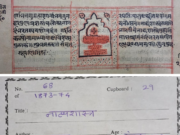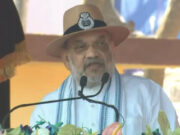
The Government has provided impetus to traditional systems of medicine through its programs. What has been the impact?
The government has undertaken a slew of measures to promote traditional medicines both through the Ministry of Ayush as well as through other schemes. That coupled with a resurgence of interest in holistic health and wellness as a result of the Covid pandemic, has given a quantum boost to the industry. In 2021, Ayurveda had a product market in India worth Rs. 51,000 crores and is projected to record 19.8% growth from 2022 to 2027.The last few years have seen a veritable explosion of start-ups in the Ayurveda space. The Ayurveda industry is dominated by some 40,000 MSMEs who account for more than 80% of the enterprises. Government support has taken the form of promoting awareness, financing research, funding start-ups as well as instituting vigilance and regulatory frameworks for manufacturing processes – all this has helped give Ayurveda greater credibility and reach. Of all the streams of traditional medicine, Ayurveda is without doubt at the forefront.
As a Company with a more than 100 year history of making Ayurveda products, what are your learnings about taking these products to new markets and newer customer?
Traditionally our markets have tended to be more in rural India. That is changing rapidly as the urban market has developed a huge appetite for Ayurveda-based health-care products, Ayurvedic nutraceuticals, Ayurvedic medicines, and dietary supplements. We have expanded our product range beyond generic formulations to create patented proprietary products that address the specific needs of our new consumer base such as medicines for anxiety, insomnia, weight loss, chronic lifestyle diseases and pollution-related ailments. We are also conscious of naming our products in such a way that their usage is self-explanatory such as Rhuma Oil for rheumatic and muscle pain. We are also developing our packaging and product information to appeal to the sensibilities of a newer market.
How do you address the criticism that Ayurveda products don’t go through the same level of clinical trials or have verifiable ways to test their results as allopathic medicine?
As far as our generic formulations go – our rasayans, bhasmas etc. – they have undergone centuries of clinical trials as they have been in use since the time of Charaka. Their ingredients and processes have remained true to the letter and spirit of those ancient texts. They are not experimental drugs. With regard to Baidyanath’s own proprietary formulae, these are designed and prepared under the supervision of our own trained Vaids. They then go to government laboratories who screen them for toxicity. Thereafter we run clinical trials at the Faculty of Ayurveda, Institute of Medical Sciences, Banaras Hindu University (IMS-BHU). Beyond that we conduct our own trials on volunteers who come to our charitable Dharmarth clinics in Patna. The product only goes into mass production after 3-5 years of trials. In 2013 , in view of the growing interest in alternative medicines, the Ministry of AYUSH formulated Good Clinical Practice (GCP) guidelines, but there is a need to develop trial modalities more suited to the individualized nature of Ayurvedic treatments.
Where do you see the benefits of Ayurveda in modern day life where we are seeing a rise in chronic lifestyle related ailments?
Today more than ever Ayurveda is the need of the hour because it is primarily a guide to healthy living, in synchronicity with the rhythms of the planet. Ayurveda’s focus is on preventive rather than curative healthcare. We would like to see Ayurveda as a part of daily living, with regular intake of super-plants such as tulsi, amla, giloy and supplements like chyawanprash, ashwagandha and rasayans which retard cellular aging. If people were to incorporate the principles and prescriptions of Ayurveda into their everyday life, we will see a sharp decrease in chronic lifestyle diseases.
What can be done to better promote Ayurveda?
Firstly, I strongly feel that Ayurveda needs to be included in school curriculums or disseminated through workshops and seminars. It is important that the indigenous knowledge systems are preserved. Children should have a working knowledge about the medicinal properties of common herbs and plants. They should understand human health in the context of the environment, and see themselves as integrated into nature and community. This is the holistic Ayurveda perspective.
Secondly there is a problem of access to good, qualified Vaids, as there are few clinics or dedicated hospital departments. The government and private hospitals should create spaces for consultations with good Ayurveda practitioners.
You have authored a book called Ayurveda Advantage which was launched recently. What is the key message you are sending out ?
Ayurveda Advantage is an essential handbook for understanding the foundational principles of Ayurveda and for applying its recommendations and remedies to the everyday lives of the modern reader. The key message is that Ayurveda is not a remote, esoteric science – it is accessible to all of us and relevant to our busy modern lifestyles.



































